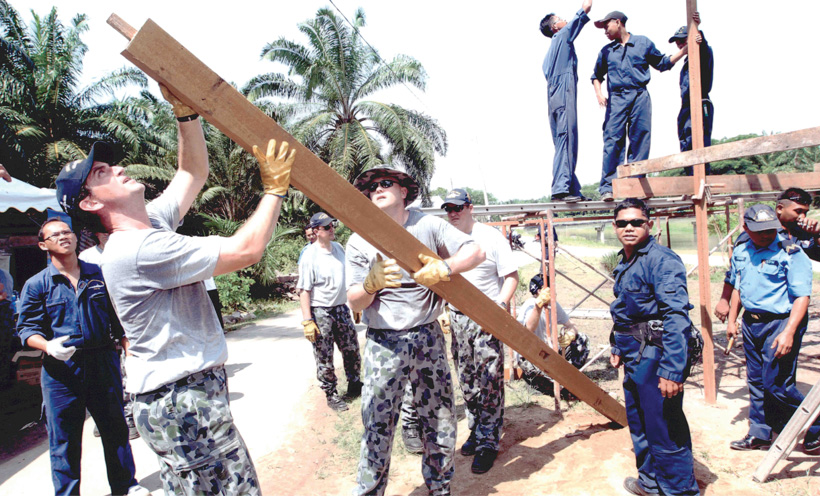Chapter 1
New Defence Arrangements for a New Era
The 1970s brought new synergies in the Australia–Malaysia defence partnership based on changing regional dynamics. The ownership of the British airbase at Butterworth, which 'for almost all practical purposes' had been an Australian base since 1958 under AMDA, was returned to Malaysia in 1970.26 The base, however, remained under Australian command until June 1988.27 At a ceremony farewelling the RAAF 79th Squadron, the Australian and Malaysian Defence Ministers locked hands in 'a symbol of unity and cooperation', reaffirming their commitment to the FPDA and its Integrated Air Defence System (IADS).28 Although Butterworth has been under Malaysian command since 1988 and Australian strike aircraft are no longer based there, it remains pivotal to Australia's regional defence and the ADF continues to conduct joint military exercises, maritime surveillance operations and humanitarian assistance missions from it. As pledged in 1988, this ongoing cooperation is underpinned by the FPDA.


The FPDA (Australia, Malaysia, New Zealand, Singapore and the United Kingdom) replaced the ANZAM and AMDA agreements in 1971 after Britain withdrew its military capability from Southeast Asia. The arrangements put in place a framework for cooperation that retains its importance as the only collective security arrangement in Southeast Asia.29 In 2011, on the 40th anniversary of the FPDA, BERSAMA LIMA joint exercises were introduced with the aim 'to enhance the interoperability of the combined air, ground and naval forces of the FPDA countries'. In 2012 Exercise BERSAMA SHIELD was initiated to promote 'a shared understanding of procedures for air and maritime operations, the protection of the marine environment and disaster relief management'. 30 BERSAMA LIMA and BERSAMA SHIELD are now annual joint exercises and there are eight ADF members posted to the FPDA's IADS Headquarters at the Royal Malaysian Air Force (RMAF) base, Butterworth. This includes the Commander, an Australian Air Vice-Marshal. Far from being a Cold War anachronism, the FPDA is 'particularly well-suited to the likely future strategic circumstances' both countries face in the region.31
Australia and Malaysia participate regularly in other bilateral and multilateral exercises, such as the Army's annual SOUTHERN TIGER and HARINGAROO exercises, the Navy's MASTEX exercises, the Air Force's PITCH BLACK exercises, and the United States–Thailand COBRA GOLD military exercises that take place with other regional partners. Also serving the bilateral partnership since 1992 is the Malaysia–Australia Joint Defence Program (MAJDP) aimed at enhancing the effectiveness of the bilateral defence relationship. Under the MAJDP, reciprocal arrangements provide ADF officers with the opportunity to undertake long-term attachments with the Malaysian Armed Forces (MAF), while similar numbers of MAF officers are attached to ADF Units. Significant numbers of MAF personnel also undertake courses at the major military training institutions in Australia,32 while ADF officers attend the MAF Staff College, Maktab Turus Angkatan Tentera.

